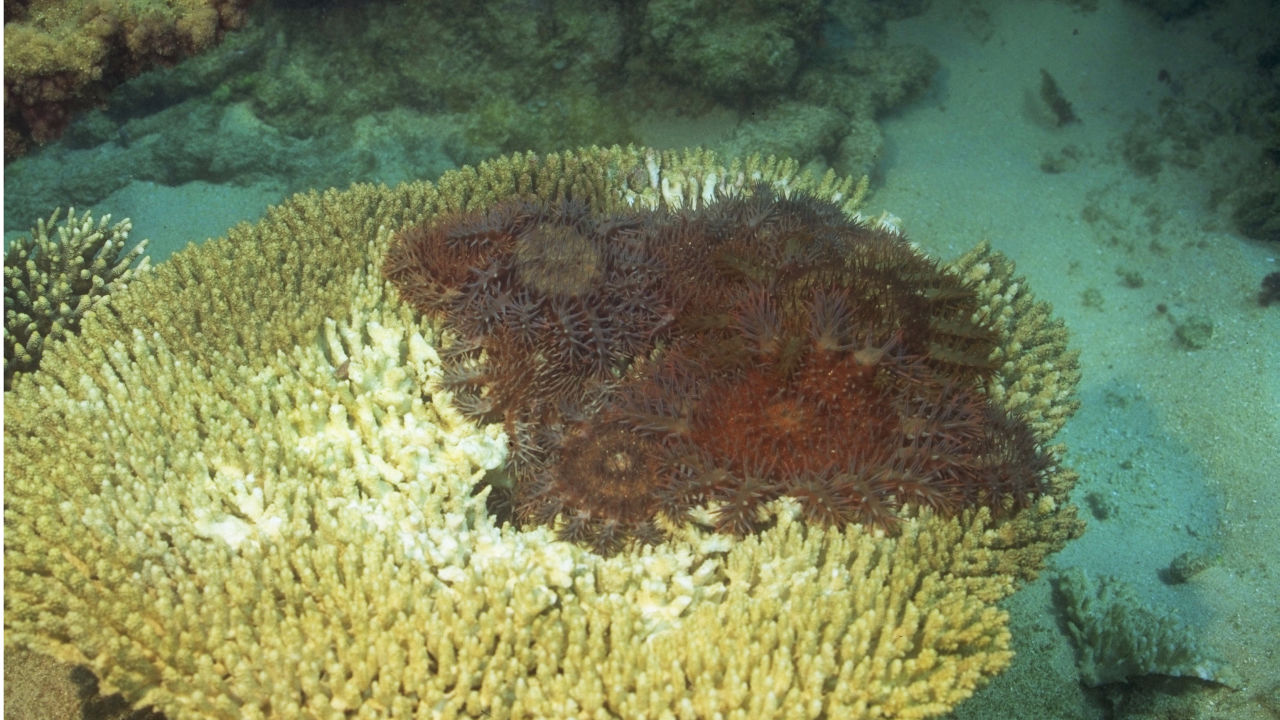News ·
Five fascinating facts about crown-of-thorns starfish
Crown-of-thorns starfish, or COTS, are a native species on the Great Barrier Reef, but pose a major threat to coral populations. They eat up to 10 square metres of coral a year and, with long needle-sharp spines covering their body, they’ve got built-in protection from predators.

They’re also super-spawners: millions of eggs are produced each season.
Our Reef is experiencing its fourth major COTS outbreak since the 1960s. With our partners, we’re working to advance the technology that helps us decide when and where to intervene to best protect coral reefs.
Here are five fascinating facts about crown-of-thorns starfish.
1. COTS are thorny in name and nature
Crown-of-thorns starfish received their common name from the needle-sharp spines that cover their arms and body that supposedly resemble the biblical crown of thorns. Their scientific family name – Acanthaster - means almost the same thing. In Latin, Acanth means thorny and aster means star.
2. COTS have lots of predators
Despite their toxic spines, lots of animals on the Reef eat COTS. Until very recently, scientists believed only the giant Pacific triton snail could digest them, but we now know many fish and crustaceans dine on these starfish, particularly while they are young and don’t have as many toxic spines.
3. COTS have eyes in their arms
In the dark of night, you might spot COTS crawling across the reef at a whopping 30cm a minute. That’s relatively fast for a starfish. Like all starfish, COTS have tiny water-powered tube feet underneath their bodies that inflate, extend and walk them forward. A special light-sensitive eye spot located in the end of each arm helps the starfish to orientate themselves and find their feeding grounds.
4. COTS are supersized starfish
Starfish are famous for their “arms” that give them their star-like shape. Of the 2,000 species that inhabit our oceans, the classic five-armed starfish are the most common. But some, like the crown-of-thorns, take it to a whole new level. They’re one of the largest of all starfish, growing more than 20 spine-covered arms in their lifetime and reaching 50cm in diameter.
Credit: GBRMPA
5. COTS feed by ejecting their stomachs onto their food
COTS prefer their food alive – and luckily for them coral doesn’t go anywhere fast. The starfish have an exclusive diet of stony coral, preying on the polyps that make up the coral’s soft tissues. They project their stomach from their mouths, covering an area almost as big as they are. Their digestive juices liquify the coral beneath and the starfish absorb the meal. They then invert their stomach back inside their body.
To protect the coral on our Reef, we reduce COTS numbers by injecting them with bile salt (made in the liver of oxen) or vinegar. This kills the starfish but doesn’t harm the surrounding ecosystem.




